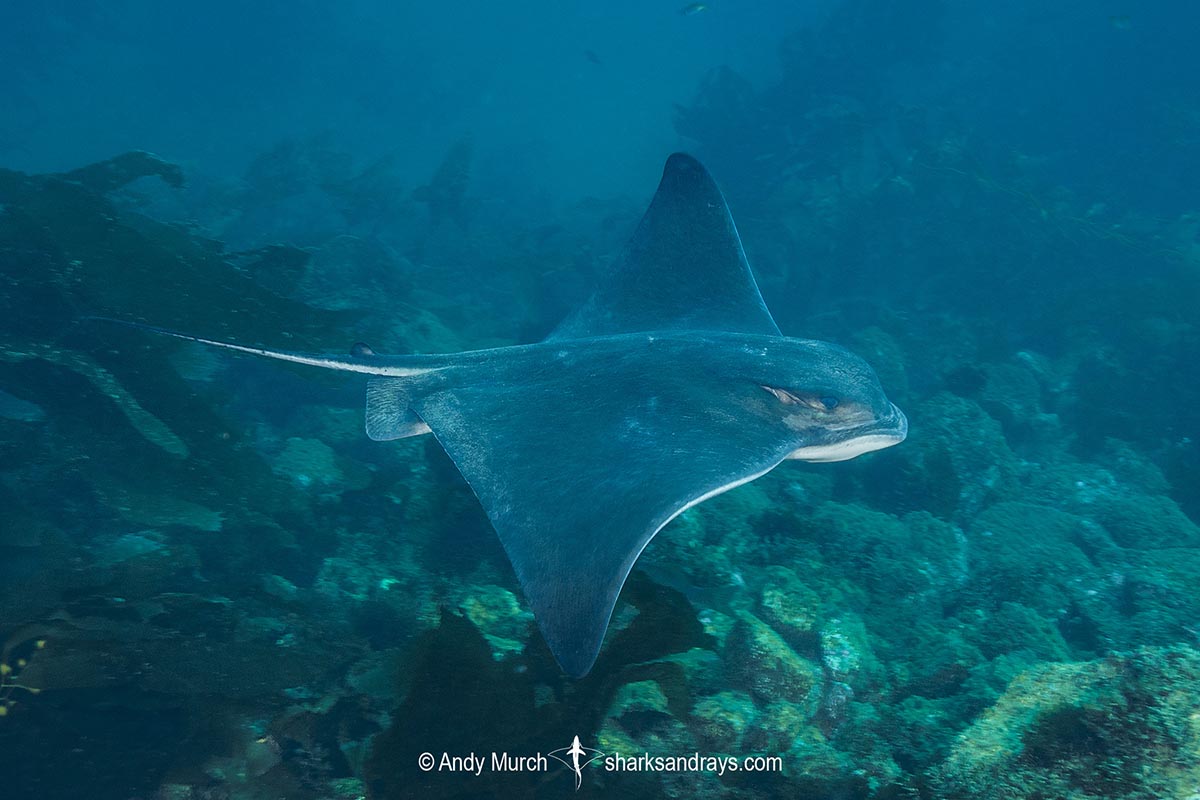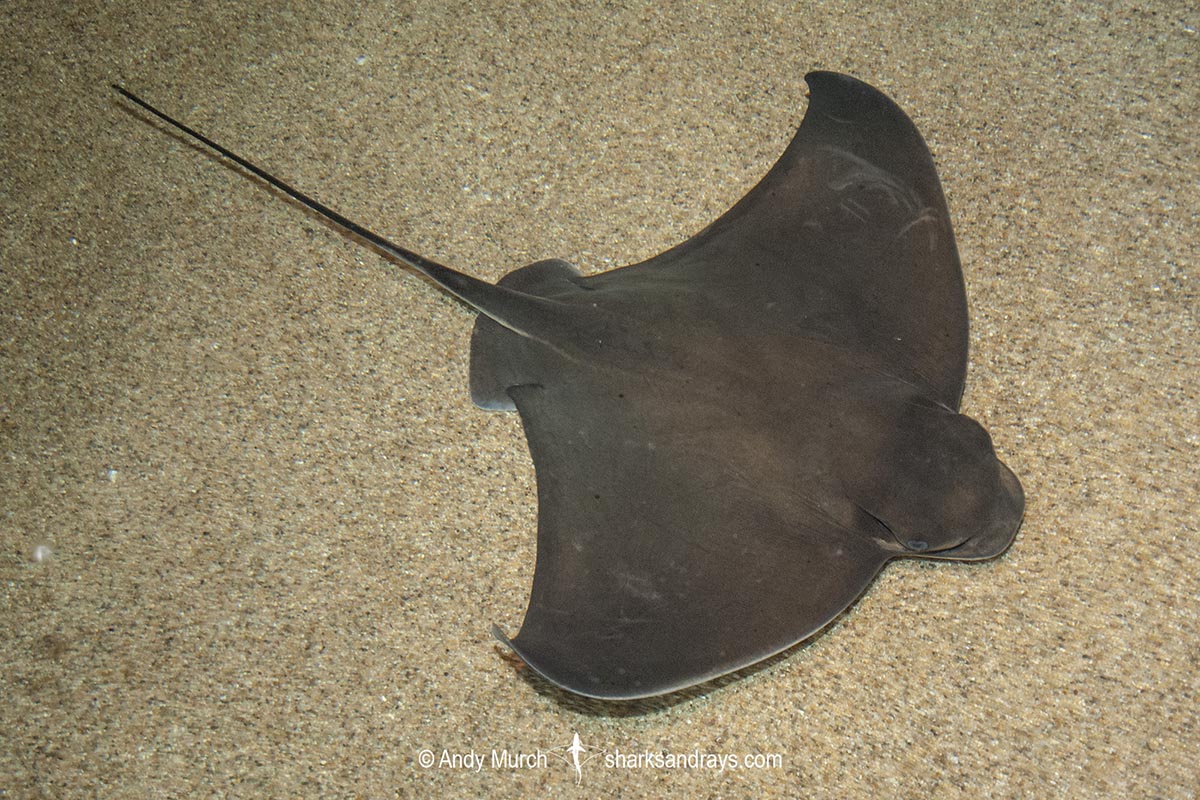Common name(s)
Bat Ray, California Bat Ray.
Binomial
Miliobatis californica
Synonyms
Holorhinus californicus, Myliobatis californicus, Rhinoptera encenadae, Rhinoptera vespertilio.
Identification
A large eagle ray with a kite-shaped disc (less than 2x wider than long) and large protruding head with a short, fleshy, broadly rounded rostral lobe that joins pectoral fins below eyes. Spiracles large, positioned laterally, barely visible from above. Nasal curtain short and wide with a long fringe along posterior margin, without deep central notch.
Pectoral fins have straight anterior margins, mildly concave posterior margins, and rounded apices. Pectoral fins originate below eye. Disc entirely smooth, lacking denticles or thorns. Pelvic fins large, extending beyond disc margin. One small dorsal fin with a broadly rounded apex and a short free rear tip, positioned midway between tail base and caudal sting. Tail broad based and long, tapering abruptly to caudal sting then filamentous to tip. Tail length more than 2x disc width when intact. One caudal sting usually present.
Colour
Dorsum brownish grey, olive grey, or blackish, without markings. Ventrum white with dusky or dark pectoral apices.
Size
Maximum disc width 180cm. Disc width at birth 20-31cm.

Conservation Status
LEAST CONCERN
The bat ray is caught and retained in artisanal elasmobranch fisheries in México. It is also a bycatch component in commercial trawls, longlines, and gillnets in the United States and México. It was historically targeted in the United States.
Although the bat ray was found to be relatively abundant on the Pacific slope of Mexico, it is much less common in catches along the Baja Peninsula.
Bat rays reach maturity quickly and are relatively fast growing, which may account for their continuing abundance, but it is worth noting that they have not been assessed by the IUCN since 2014. Since then, declines may have occurred.

Habitat
Tropical to warm temperate seas. Shallow sandy or muddy bays, rocky reefs, estuaries, and kelp forests. Intertidal to at least 108m but usually in shallow water.
Distribution
Eastern Pacific. Oregon to southern Baja and throughout the Sea of Cortez. Possibly also to the Galapagos Islands.
Reproduction
Matrotrophic viviparity. 2-12 pups per litter. Gestation 9-12 months.
Diet
The bat ray consumes a wide variety of invertebrates including abalone, clams, gastropods, shrimps, polychaete worms, and even sea cucumbers. Plus some small bony fishes. Gorges on market squid (Doryteuthis opalescens) during the mass spawning events in California.
Behavior
Often solitary but forms large mating aggregations in shallow bays during the summer. Excavates large, deep holes in the substrate to retrieve prey.
Reaction to divers
Usually shy around scuba divers unless preoccupied with feeding.
Diving logistics
California Bat Rays are often encountered while diving in the kelp forests around Catalina Island. Dive companies in Avalon can arrange charters to the best sites but there is no guarantee that bat rays will show up.
Shore divers in Southern California regularly see bat rays along the shoreline just outside the surf. Try to get up to date advice from locals on the specifics of where and when to plan a dive. Beach divers at La Jolla Shores sometimes see bat rays in the presence of Leopard Sharks during the summer and fall.
If you manage to time your visit to coincide with the market squid run you are almost guaranteed to see bat rays and numerous other elasmobranchs. The squid run is hard to predict but usually occurs in December.
What’s new
View our full list of updates
Similar species
Longnose Eagle Ray Distinguished by much longer rostral lobe that is somewhat pointed. Sympatric in southern Baja.

